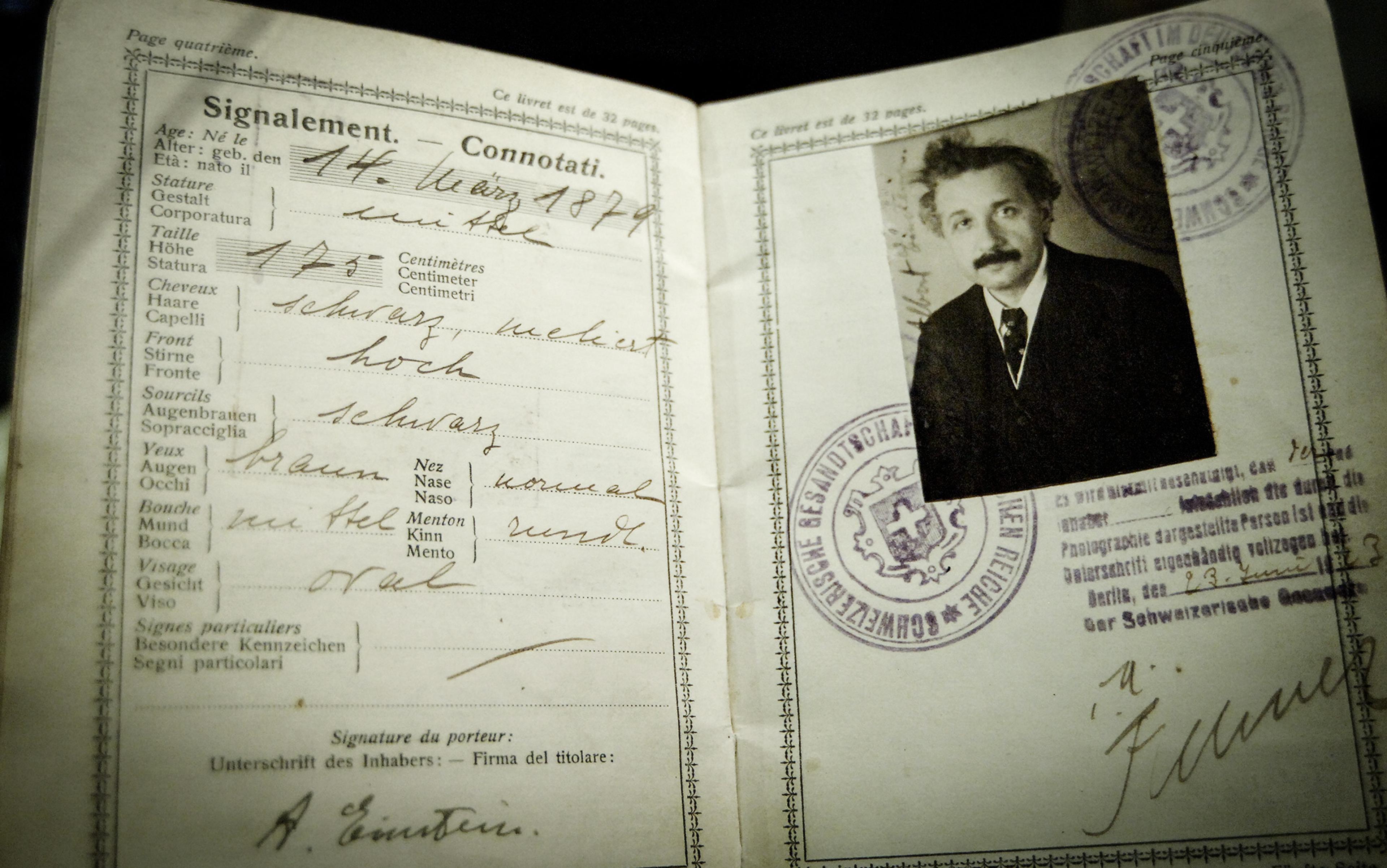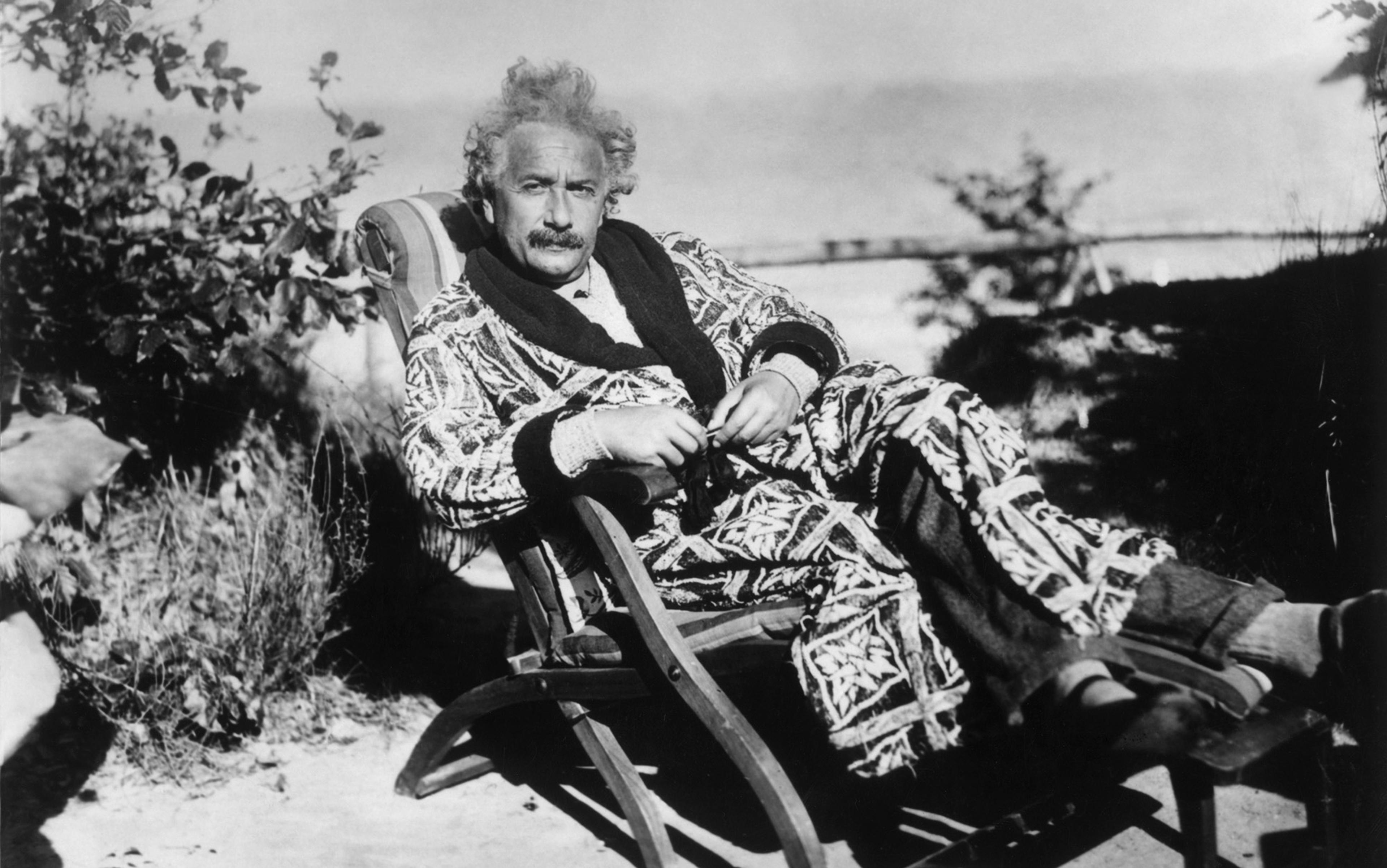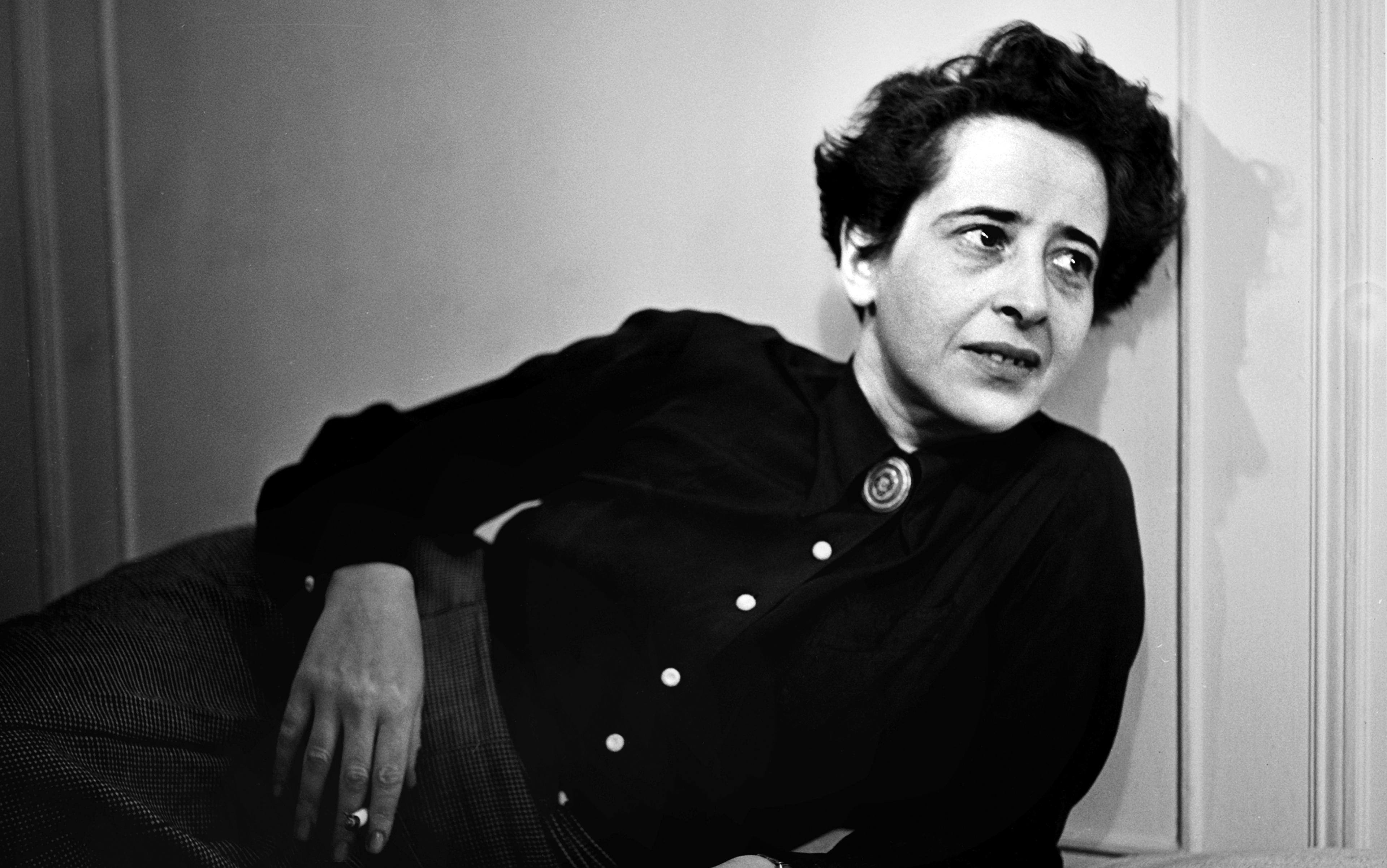Germanness and Jewishness have each been impossible for centuries of European history. In a time when political legitimacy meant a nation-state, the Germans were long too big to be contained within a single one, and the Jews long too despised and dispersed to have their own. In the mid-20th century, the murderous atrocities of National Socialism would lock Germanness and Jewishness in seemingly mortal opposition. But before the rise of Nazism and its historic crimes, no inherent conflict stood between Germanness and Jewishness. Ostensibly, bloodline or heritage determined both of these, but in actuality each was an amalgam of confession, language and class, any of which could change over the course of a life.
For centuries in central Europe, being labelled both German and Jewish was commonplace. Often, what individuals meant when identifying themselves as one could reshape how they were understood to relate to the other. Declaring yourself to be German as well as Jewish acquired different valences when your audience primarily understood itself (and you) as one or the other. Identification is part individual volition and part a process of being identified – by states, religious groups and other institutions and communities. An individual’s biography is but one important variable in the equation. Let’s take one example you will certainly recognise.
As quotable as he was photogenic, Albert Einstein can lull us into thinking he was made for the Twitter and Instagram click-a-thon, though it was tabloid vignettes and newsreels that helped to power his rise to global celebrity. Einstein has been massively famous for just over a century, catapulting to worldwide renown in the wake of the 1919 eclipse expedition led by the British astronomers Arthur Stanley Eddington and Frank Watson Dyson to measure how much starlight would bend around the massive body of our Sun while it was conveniently shrouded in an eclipse. Eddington and Dyson declared Einstein’s predictions correct. The newspapers ran with it, and the moustachioed theoretical physicist captivated the public.
It was all a bit inexplicable then, and remains a matter of discussion among historians today. In late November 1919, Einstein had his own take, in The Times in London:
Today I am described in Germany as a ‘German savant’, and in England as a ‘Swiss Jew’. Should it ever be my fate to be represented as a bête noire, I should, on the contrary, become a ‘Swiss Jew’ for the Germans and a ‘German savant’ for the English.
As with much of Einstein’s humour, there is a barb within the bonbon. He understood that the names commonly used to describe one’s ‘identity’ are not entirely under one’s control.
The crux of the issue is the term ‘identity’ itself. It can be tempting to think that identities are immutable and self-evident. Because neither is quite true, the sociologist Rogers Brubaker and the historian Frederick Cooper would prefer we dispensed with the term ‘identity’ altogether in favour of ‘identification’. As they noted in 2000, the longer and somewhat more clinical term
invites us to specify the agents that do the identifying. And it does not presuppose that such identifying (even by powerful agents, such as the state) will necessarily result in the internal sameness, the distinctiveness, the bounded groupness that political entrepreneurs may seek to achieve.
Sometimes, you are the one doing the identifying (of self or other); sometimes, you are being identified. The magic comes in tricking you into thinking that those identifications are your intrinsic identity. Appreciating that power shapes how we think of ourselves and others opens up new perspectives on xenophobic nationalism and antisemitism, and new possibilities for thinking about ourselves and others.
Einstein’s changing identifications illustrate the role of power in identification and the mutability of claims to identity. Throughout his life, he was repeatedly referred to as a ‘German’ and a ‘Jew’, two terms that we have come to interpret, since the mid-20th century, as being at odds. Yet Einstein identified as both, albeit with reservations. He resisted attempts by others (especially state bureaucrats) to prescribe identifications to him, while also mobilising assertions of identification to support pacifism, Zionism and other commitments. It is quite rare for identifications to exist in the singular or to remain fixed over time, and so it proved in Einstein’s case.
The first record we have of Einstein’s views on being German involve him denying it. He was born in 1879 in Ulm, in the German state of Württemberg, and he retained that citizenship upon the family’s departure, shortly afterward, to Munich, the capital of the state of Bavaria. As he approached graduation from secondary school, Einstein refused to enlist in the obligatory military service. A month and a half shy of his 17th birthday (and thus still a minor) he asked his father to renounce his citizenship for him. As of 5 February 1896, when Ulm confirmed the decision, Einstein was officially stateless.
He soon settled in Switzerland and eventually enrolled at the Swiss Federal Polytechnic School, later renamed the Federal Institute of Technology (ETH), in Zürich. He became a Swiss citizen on 21 February 1901, five years after he had forsaken his German citizenship. Born within the newly formed German Reich, Einstein was happier being Swiss.
He kept his passports in order, but didn’t put much stock in nations. In a manuscript drafted between late October and early November 1915, and eventually sent to a pacifist organisation for publication, he wrote:
The state to which I belong as a citizen plays scarcely any role in my emotional life; I consider the affiliation with a state as a business arrangement, something like the relationship to a life insurance policy.
So he wrote – and then crossed it out, perhaps because it was rather too strong a statement to be published while Germany was in the grips of the Great War.
Indeed, it was to Einstein’s advantage to keep quiet about citizenship questions. Although he was now a professor at the University of Berlin and a director of the Kaiser Wilhelm Institute for Physics, and thus a German civil servant, his insistence that he was a Swiss citizen meant that he was not approached for war work. He confirmed this status in a letter to the Berlin-Schöneberg Office of Taxation in 1920: ‘I am Swiss, here in Berlin since early 1914.’
Einstein’s Nobel Prize in Physics proved an inconvenience for his non-German Swissness
Einstein’s cavalier attitude to his Germanness put him at odds with some of his closest friends. Unique among scientist colleagues in the Central Powers, he was not subjected to the boycott and travel ban that the victorious powers of France, Belgium, Britain and the United States imposed after the war. The news of the confirmation of general relativity afforded an excellent occasion to invite Einstein, a well-known pacifist and opponent of the war, to Paris or New York where he might quietly lobby to end the boycott, which he opposed as a manifestation of virulent nationalism. The chemist Fritz Haber and other friends objected to Einstein’s globetrotting as disloyal to the sufferings of Germans. Einstein’s response dismissed the matter of national loyalty: ‘Allegiance to the political image of Germany would be unnatural for me as a pacifist.’ He went on the trip to the US, and then on another to Japan, China and the British Mandate of Palestine, all on his Swiss passport.
In 1922, Einstein declared to Gilbert Murray, the Australian-born British man of letters, that:
I am not an appropriate representative for German intellectuals, because I am not seen by them in their full number as their representative. My outspoken international attitude, Swiss citizenship and Jewish nationality work together so that I would not be met in a political relationship by the majority of the masses with the trust that a representative of a country must possess to be able to serve as a link with success.
Einstein sketched out an array of identifications here, noting that they worked to make his own Germanness impossible.
In 1922, while in Japan, Einstein was awarded the Nobel Prize in Physics for the previous year, an event that proved an inconvenience for his non-German Swissness. Nobel Prizes needed to be received in person; if the laureate were not personally able, an ambassador would stand in. Naturally, the Swiss ambassador presented himself for the honour, given that Einstein was at that very moment travelling as a citizen of the canton of Zurich. So did Rudolf Nadolny, the German ambassador to Sweden. The Germans maintained that German citizenship attached to Einstein as a requirement of his Berlin post. Einstein had objected to this clause during negotiations in December 1913, and the Germans had not felt it necessary to contest the point later during the war. With the Nobel Prize, circumstances had changed, and Nadolny accepted the award on his behalf. Einstein at first protested his symbolic de-Swissification, but within a year relinquished his opposition to the state’s narrative, and settled in as a German citizen.
Everything changed on 25 August 1933, when Germany’s National Socialist government rescinded Einstein’s citizenship. He at once became the world’s most famous refugee. He was granted asylum in the US and a position at the Institute for Advanced Study in Princeton, where he became a prominent advocate for those displaced by Hitler’s racial laws and the war. In 1935, the Einstein family travelled to Bermuda so that they could re-enter the US on permanent visas. On 1 October 1940, after the obligatory five-year waiting period, Einstein, his stepdaughter and his secretary all took their oath of allegiance as US citizens. Even now – he was perhaps the most recognisable American alive – Einstein’s vocal support for civil rights and nuclear disarmament provoked J Edgar Hoover’s FBI to explore the possibility of stripping Einstein of his citizenship as an undesirable immigrant. The FBI’s quixotic effort against the massively popular Einstein failed, and the physicist died as a US citizen. The question of whether he had ever been ‘German’ remains a matter of dispute.
Einstein’s Germanness might seem to be a matter of a passport or other formal registration, an identification that was externally granted or taken away. One might assume, as a matter of course, that Jewishness is something different, not just externally ascribed but also internally embraced – a matter for identity, not just identification. For Einstein, the interaction between active and passive identification for confession and ethnicity was even more turbulent than nationality.
His reluctance to affiliate with organised religion began in childhood. His parents identified as Jews and, though not devout, adhered to some of the outward customs. As a boy, he became curious about going deeper into the rites, at least for a time. In 1949, he described his evolving youthful identification with Jewishness and, at age 12, his abandonment of religious faith:
Thus the first escape was religion, which is implanted in every child through the traditional education-machine. So I came – although a child of entirely unreligious (Jewish) parents – to a deep religiosity, which however found an abrupt end at 12 years of age. Through reading popular scientific books I soon came to the conviction that much in the stories of the Bible could not be true. The consequence was a perfectly fanatic bout of freethinking, combined with the impression that youth was deliberately being deceived by the state; it was a devastating impression.
Einstein chose to forego a bar mitzvah and – in the manner of teenagers – believed that he had decisively turned away from the religion. From when he came of age and could fill out his own bureaucratic forms as a university student in Zurich, and later as a patent clerk in Bern and a professor back in Zurich, he declared himself to be ‘without religion’ or, in the German term, konfessionslos.
In 1911, when he was offered his first full professorship, in Prague, he told the Viennese bureaucrats that he would remain konfessionslos. The Habsburg emperor, however, maintained that one could honestly swear an oath only if it were vouchsafed by a belief in a deity – attested, by proxy, through adherence to a religious confession. Einstein wanted the job, so he made a simple substitution: he replaced konfessionslos with ‘mosaisch’, the faith of Moses. And so, through the unsparing precision of Austrian bureaucracy, Einstein ‘helped myself to my once-again assumed Jewish “faith”’.
When he returned to Zurich in 1912, Einstein again registered as konfessionslos. Seven years later, on the occasion of his second marriage, to Elsa Einstein, in 1919, the issue of Einstein’s legal identity as a Jew returned, and it came with trouble.
Einstein had grown quite vocal about identifying as a Jew and especially with cultural aspects of Zionism
As with most European states at the time, a portion of one’s taxes went to state-sponsored religious institutions by proportion with demographic registration. Registering in a religion therefore had fiscal implications for churches and synagogues, and they came to Einstein to collect. The first such exchange was farcical: Albert and Elsa’s marriage was apparently registered as Protestant. The newlyweds assigned the task of complaining about the error to Elsa’s daughter Ilse:
Prof Einstein and his wife have never belonged to a confessional community, although they are children of Jewish parents … Since Prof Einstein and his wife have never belonged to the Protestant church, they are naturally not in a position to present you with a certification of their leaving the church community.
A year later, however, in 1920, Einstein had grown quite vocal about identifying as a Jew and especially with cultural aspects of Zionism (most prominently, support of a university in Jerusalem where Jews would not be subjected to bias in either admissions or employment). To others, his views no doubt signalled his identification with the Jewish religion (and thus the official Jewish Community or Jüdische Gemeinde), but Einstein still insisted he was konfessionslos:
On mature consideration I cannot resolve to enter the Jewish cultural community. As much as I feel myself a Jew, just as much am I confronted by traditional religious forms as a stranger.
Officials from the Gemeinde responded that ‘every Jew is by force of law a member, liable for taxation, of the Jewish Community of the region in which he lives … The Community is therefore not authorised to ignore your assessment according to this rule.’ Einstein baulked:
I explain to you once again herewith that I do not intend to enter into the [Jewish] community, and that I do not consider it necessary …, but rather remain konfessionslos as I have been up to now.
He continued, more provocatively:
To your letter I remark that the word ‘Jew’ is double-valued, in that it refers 1) to nationality and origins, 2) to religious confession. I am a Jew in the first sense, not in the second.
Despite repeated pleas from letter-writers that his membership in the Community would assist with Zionist goals, or would improve the status of Jews, Einstein demurred:
The Community is an organisation for the practice of ritual forms, which lies far from my intention. I must take it as what it now is and not as what one might wish to see it perhaps transformed into.
(Nonetheless, in 1924 he quietly joined the Jewish Community of Berlin.)
States had slapped Einstein with legal identifications such as ‘Jewish’ or ‘German’ (or ‘konfessionslos’ or ‘Swiss’ or ‘American’). Einstein of course was far from powerless, and he too took control of acts of identification for political ends that were important to him. He recognised that what he wanted to do depended in part on who other people took him to be. On pragmatic grounds, identification trumped identity for Einstein.
The discrimination in Berlin against Jewish refugees – the Ostjuden – from the carnage in eastern Europe during the First World War, often on the part of Westjuden German citizens, infuriated Einstein. The persecution of Jews and his antinational pacifism prompted Einstein to endorse some of the cultural goals of the World Zionist Organization (WZO): principally, a university in Jerusalem. It was German nationalism, and its antisemitism, that compelled Einstein to assert his Jewishness in the cause of peace and safety for those identified by others (and often themselves) as Jews.
Einstein told his contact in the WZO, Kurt Blumenfeld:
I am against nationalism, but for the Zionist cause. The reason has become today clear for me. When a person has two arms and constantly says: ‘I have a right arm,’ then he is a chauvinist. If a person however lacks a right arm, then he must do everything to substitute for that missing member. Thus I am in my general attitude to humanity an opponent of nationalism. As a Jew, however, I exert myself from today forward on behalf of Jewish-national Zionism.
To the extent that Einstein countenanced nationalist identifications, they were identifications with a weak party, one with a deficit. Those identified as Jews qualified.
Einstein also used the facts of his biography and his fame to try to recruit others to oppose antisemitism and murderous nationalism. At the moment that Einstein began to be troubled by the course that Zionism had taken in Palestine in the wake of the 1929 Arab rebellions against the British Mandate – he would later dissociate himself from the movement over the fallout – he spoke out in defence of Jews being persecuted by Hitler’s National Socialist regime. From Princeton, Einstein insisted that ‘the fiction’ of ‘the “Aryan” race’ was ‘invented solely to justify the persecution of the Jews’, a looting that masked the ‘process of cultural disintegration’ in Germany that ‘must alarm anyone interested in the welfare of humanity’. A favoured target of antisemites in Germany for more than a decade, his visible fundraising and moral high ground enraged the Nazi hierarchy, who cultivated a virtual mania about Einstein. He had become the bête noire he had predicted in 1919.
Having been a member of the German minority now informed how he thought of himself as a Jewish minority
From Berlin, Max Planck, the leader of German physics, wrote to Einstein asking for him to moderate his criticism so that those at home opposed to the racial policies would have more room for manoeuvre. Einstein was not swayed. On 6 April 1933, two weeks after the Enabling Act essentially granted Hitler a free hand in running the country, Einstein responded by trying to explain to Planck why he could not remain silent – and why, under different circumstances, Planck would act the same way:
I ask you to imagine yourself for a moment in the following position. You are a university professor in Prague. A regime comes to power there that robs from the Czech Germans their means of existence, and that simultaneously forcibly prevents them from leaving the country.
Imagine there are border guards to shoot those who try to leave but at the same time the Czech Germans are unable to earn a living at home. The regime, Einstein wrote:
is conducting a bloodless war of annihilation against them. Would you then find it correct to take this silently, not to speak out for them? Isn’t the annihilation of German Jews through starvation the official programme of the current German regime?
Despite the polite use of the subjunctive tense, Einstein, as Planck knew, had in fact been a professor at the German university in Prague in 1911-12. Here he appropriated fantastical rhetoric about persecuted German-speakers in Czechoslovakia – a favourite trope for National Socialists – to render imaginable to a German civil servant the position of Jews in his country. When he had been a professor in Prague before the First World War, Einstein had interacted with German-speaking colleagues anxious that Czech chauvinism would make life intolerable for local Germans in a city where Germanophones were just 7 per cent of the population. He was filtering his understanding of persecution of the Jews through his own identification as a German, his experience as a member of a minority defined in national, not confessional, terms. Having been a member of the German minority in Bohemia now informed how he thought of himself as a Jewish minority.
Einstein was writing this from Princeton, where he was surrounded by other central European Jews who, like himself, had never particularly identified as Jewish, either as a matter of religion or of bloodline. It had been the state’s identification of them as Jews, not their own, that prompted them to flee. They were the lucky ones. Far from being antagonistic identities, the mutual interpenetration of Germanness and Jewishness as identifications proved definitive for many thousands who were similarly suffering the ravages of fascism.
The point about mutuality of identification is not peculiar to exceptional cases such as Einstein’s, or to the more general 20th-century tragedy of the Jews and the Germans. This is just how identification works. Because there are so many agents doing the identifying – states, religious communities, neighbours, tourists, one’s parents, one’s children, oneself – the multiplicity of identifications is bound to laminate and then amalgamate. We have built manifold identifications for ourselves and others, and anything that has been built can be dismantled and reassembled. None of them has to remain impossible.






